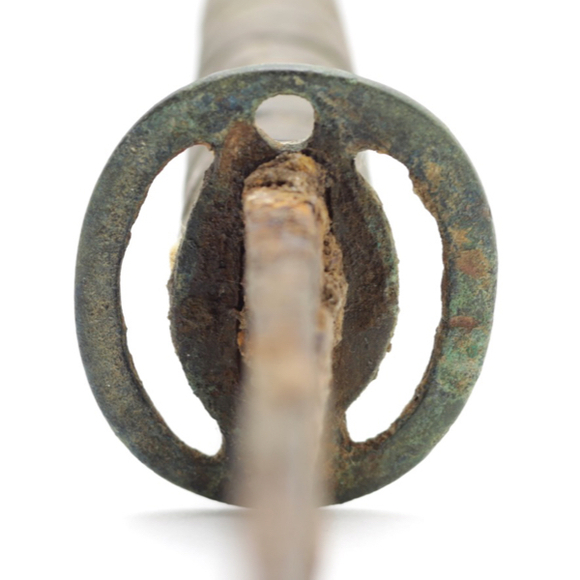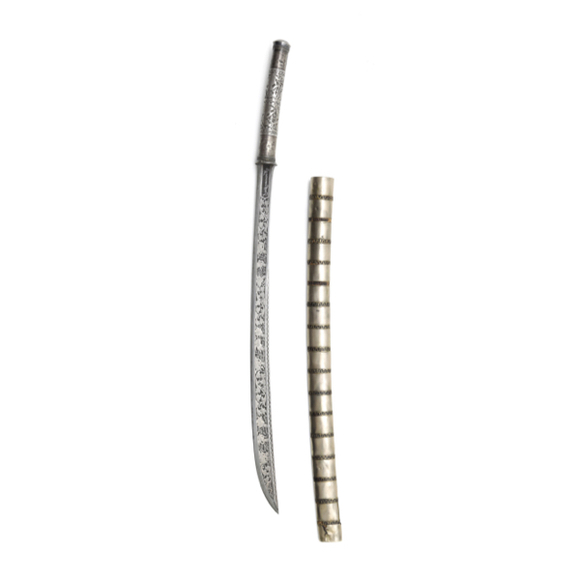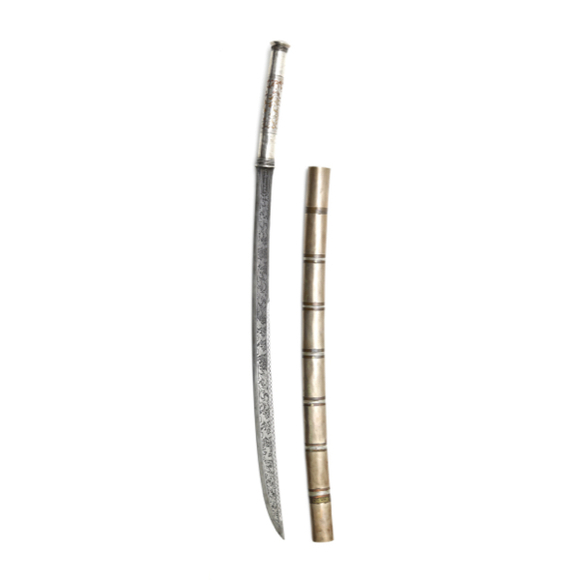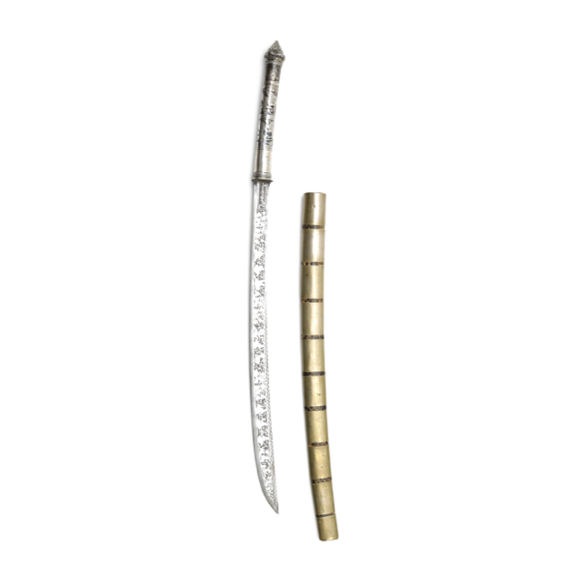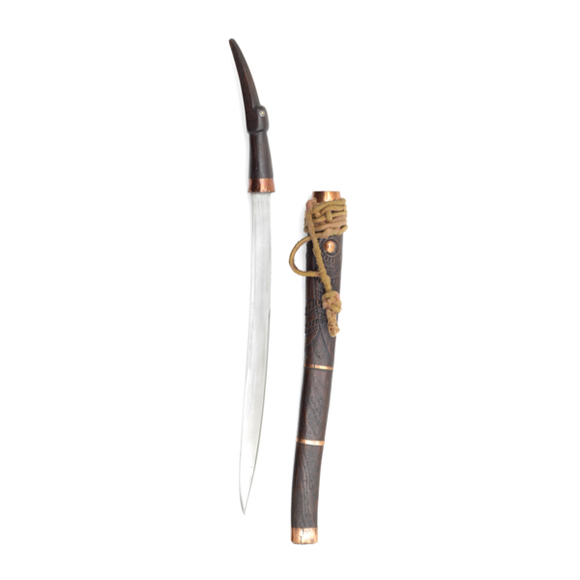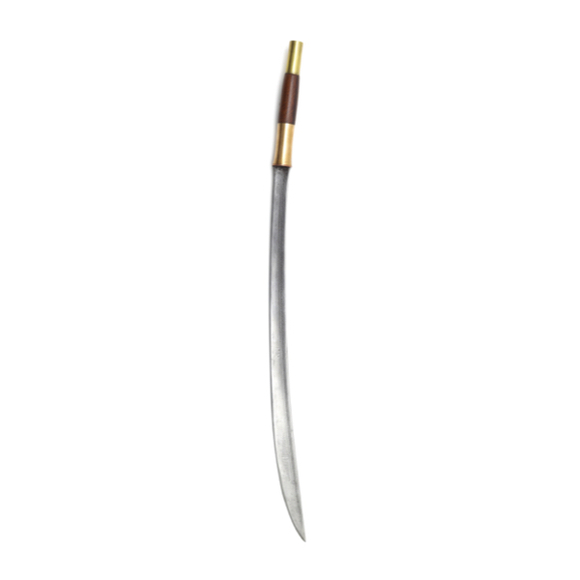In excavated condition, with copper alloy hilt.

Sheathed 94.3 cm
Sword 86.3 cm
Base 9 mm
Middle 4 mm
5 cm from tip 3mm
Narrowest at base 28 mm
Widest near tip 32 mm
Sheathed 701 grams
Sword 432 grams
10.8 cm from hilt
Iron, steel, wood, bamboo, rattan, dyed cotton
Made by Shan smiths
Burma or Yunnan
European antique market
Introduction
Plain dha such as these are seen worn in Yunnan, Burma, and northern Thailand. Devoid of any decorative features, they can be hard to pinpoint. I think they were most likely produced by the Shan people and traded widely in the region. One of the hallmarks of Shan work is that the blades are relatively light and thin compared to Burman work, something often seen on this type of sword.
Bell, writing in 1907, describes a certain "mainsa dha" which by then was primarily produced in China.1 With China, he undoubtedly meant the Husa Valley in Yunnan, which was a known production center of good dha:
“During the latter part of our stay, one of the police escort, during a chaffing argument with a Kakhyen visitor, was without warning felled by a blow of the dah.
The savage decamped to the jungle, leaving the sepoy bleeding from a gash on his head, and another on the arm, with which he had warded off the blow and so saved his skull from being split. These dahs are made by the Shans of the Hotha valley, who are the itinerant smiths of the country.” 2
-John Andersen, 1876
Notes to introduction
1. E.N. Bell; A Monograph on Iron and Steel Work in Burma. Rangoon, Superintendent, Government Printing Burma, 1907.
2. John Andersen; Mandalay to Momien: A narrative of the two expeditions to western China of 1868 and 1875, under Colonel Edward B. Sladen and Colonel Horace Browne. Macmillan, London, 1876. Page 134.

Wearers of these plain dha. Left, a Kachin man.
Right, northern Thai hill tribespeople.
This example
A textbook example with a gracious blade with moderate curve and a gentle widening towards the tip. The spine is ridged and the final portion of the blade has a well-defined back bevel. Blade in original, as found condition still showing some of the original tool marks. Some patches of corrosion.
The long hilt is made of thick-walled bamboo, covered entirely with loops of braided rattan. The wooden scabbard consists of two halves, held together by a multitude of rattan braided loops. There is a sliver missing at the back of the scabbard's mouth end.
It still retains its original red cotton baldric.




















Fine silver overlaid dha made in Mindan village, south of Mandalay, gained fame in the 19th…

